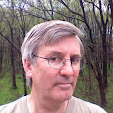Introduction
Imagine a university course conducted in a Peruvian rainforest. What if you could participate in such an expedition as an undergraduate student? How might this affect your worldview and subsequent trajectory?
Such a course exists at the University of Kansas -- BIOLOGY 418/701 Topics in Field Biology in Amazonian Peru. Thanks to the support of two far-seeing supporters working with the Biodiversity Institute and Spencer Museum of Art at K.U., special provision has been made for BIOLOGY 418/701 to serve as a pilot for an exciting new interdisciplinary program, The Rudkin Undergraduate Scholarships For International Interdisciplinary Research Experiences. The charge of this program has been stated in these terms:
One of the major challenges and opportunities facing the University of Kansas⎯indeed, all universities⎯is providing its undergraduates with a meaningful international and interdisciplinary educational and research experience., i.e., one that integrates disciplines and synthesizes knowledge across the sciences, arts and humanities in a global setting.
The program aspires to, “send teams of three to four undergraduate students from the arts, sciences and other disciplines with the Biodiversity Institute and the Spencer Museum of Art international research expeditions to collaborate, participate in, capture and ‘publish on’ the expedition, integrating and informing their individual perspectives and chosen media.” The outcomes are described more fully:
Publishing: During the expedition, the undergraduates will be provided with the means to “publish” in print, digital and/or other media, e.g., pod casts, weblog journals, reports; photographs; live feed video; newspaper features.
Exhibition: After the expedition, a joint Natural History Museum / Spencer Museum of Art exhibition drawn from these “publications” and other material would be mounted if deemed feasible and appropriate.
BIOLOGY 418/701 Topics in Field Biology in Amazonian Peru is conducted by Dr. Caroline Chaboo, curator and professor in ecology & evolutionary biology (specialist in entomology); and an by artistic advisor, myself, curator of prints and drawings and professor of art history. For the next few weeks this blog will follow the activities of the students in BIOLOGY and will further track the group’s progress toward an exhibition/installation that is expected to open at the Spencer Museum of art in December 2011.
We begin our three days of preparation at the University of Kansas. Today Dr. Chaboo spoke to our group of ten (eight students, two professors) about Insects and insect diversity; about field work and ethical issues surrounding the collection of specimens. We then visited the Spencer Museum of Art where I gave a short tour and shared some works in the print study room, among them:
--> Sebastião Salgado’s – untitled photograph of the Serra Pelada Mine, 1986
--> William Sharp’s 1854 suite of chromolithoraphs with accompanying text, Victoria Regia or the Great Water Lily of America
--> Rodlophe Bresdin’s 1861 biophiliac lithograph Le bon Samaritain (The good Samaratan)
-->H.C. Westermann’s - The Green Hell from The Connecticut Ballroom Suite (1975-76)
--> Karl Kröner’s wonderful Waldflechte, an elaboration in gouache of the design forms implicit in a sample of lichen
--> A few buggy sheets from Jacob Hoefnagel’s late sixteenth century Arcetypa studiaque patris Georgii Hoefnagelli
--> Tony Fitzpatrick’s the ten lovely etchings, Bug Circus, of 2001 ((Jewell Bug, Dancing Bug, Lopea, Green Bug, Caterpillar, Grasshopper, Harlequin, Wonder Bug, Ladybug, and Cicada)
* reminder: you can see most of these on the Spencer Museum’s website, use the search field at the upper right of the home page: http://www.spencerart.ku.edu/
We concluded our first day with a tour of the Natural History Museum and a public display, Bug World.






No comments:
Post a Comment